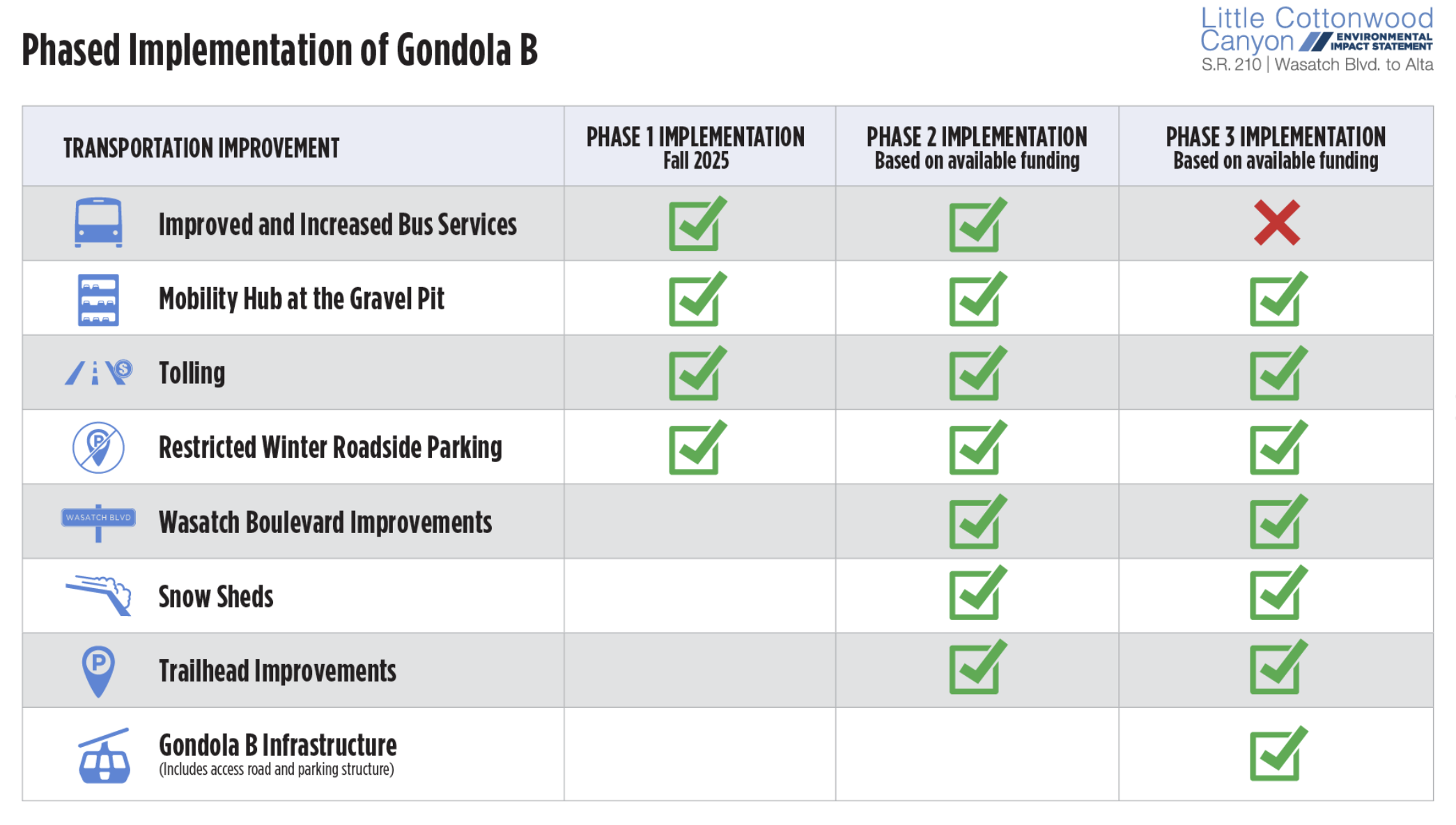Timeline
(Timeline adapted from UDOT's LCC project information.)
Spring 2018
UDOT began an Environmental Impact Statement (EIS) for LCC and Fort Union Blvd. to assess transportation solutions. UDOT opened its first comment period to receive input on the scope of the project.
2019
Based on the first comment period, UDOT modified the EIS to also consider avalanche mitigation, parking at popular access points, and spillover congestion onto Wasatch Blvd. After discovering the Wasatch Front Regional Council identified roadway improvements for LCC, such as widening Wasatch Blvd., in its 2019 Draft Regional Transportation Plan, UDOT decided to again change the EIS to include the council's "recommendation". A public comment period was open from March-June and again from November to December. UDOT ended the year with a list of over 100 concepts.
Summer 2020
In June, UDOT identified three alternatives; an enhanced bus system with road widening, an enhanced bus system without widening, and a gondola beginning at the mouth of LCC. UDOT opened another public comment period, this time focused on the three identified alternatives.
Winter 2020
After nearly 7,000 public comments, UDOT published an addendum to add the options of a gondola and cog rail both beginning at La Caille, in addition to an enhanced bus system with and without road widening and a gondola beginning at the mouth of LCC.
2021
UDOT released the Draft EIS with two preferred alternatives: the La Caille gondola and an enhanced bus system with road widening. UDOT opened up a 70-day public comment period. After making revisions to a chapter in the Draft EIS, UDOT opened an additional public comment period in December 2021. The two public comment periods resulted in over 14,000 comments.
2022
UDOT released the Final EIS and identified the La Caille gondola, with a phased approach, as their preferred alternative. UDOT chose a phased approach because it would take years to secure funding and fully construct the gondola. A final comment period ensued and UDOT received another 14,000 comments, bringing the total number of comments from 2020-2022 to over 35,000, shattering UDOT records.
March 2023
UDOT announced a new public comment period regarding two new reports.
The first report assesses the gondola's impacts on federally protected Roadless Areas, an issue UDOT failed to address during the EIS process. The gondola would require towers, angle stations, and snowsheds within one of the Wasatch’s most protected areas, impacting three Roadless Areas in Little Cottonwood Canyon: Twin Peaks, Lone Peak, and White Pine Roadless Areas. Road construction and timber harvesting are typically prohibited in these areas under the 2001 Roadless Area Conservation Rule. UDOT claims building a gondola would be exempt from the Roadless Rule because the gondola is not a road, and any timber removal would be incidental. Learn more by reading our "Roadless Rule 101" blog.
The second report makes changes to the air quality analysis, most notably, the assumption that all buses would be diesel powered under the phased gondola plan. If UDOT can adjust its analysis to consider the possibility of using higher emissions fuels like diesel, why can’t UDOT also assess the impact of electric buses?
July 2023
UDOT announced its final decision (Record of Decision) and selected the gondola, with a phased approach.
What's Next?
The first two phases of the Record of Decision include enhanced bus service, tolling, and snowsheds in Little Cottonwood Canyon. The gondola comes later in Phase 3. You can see the details of the phases in the image below:

UDOT still needs to secure funding for parts of Phase 1 and 2, and for the gondola, so although UDOT issued its decision, there is still an opportunity to engage and prevent the gondola from ever coming to fruition.







